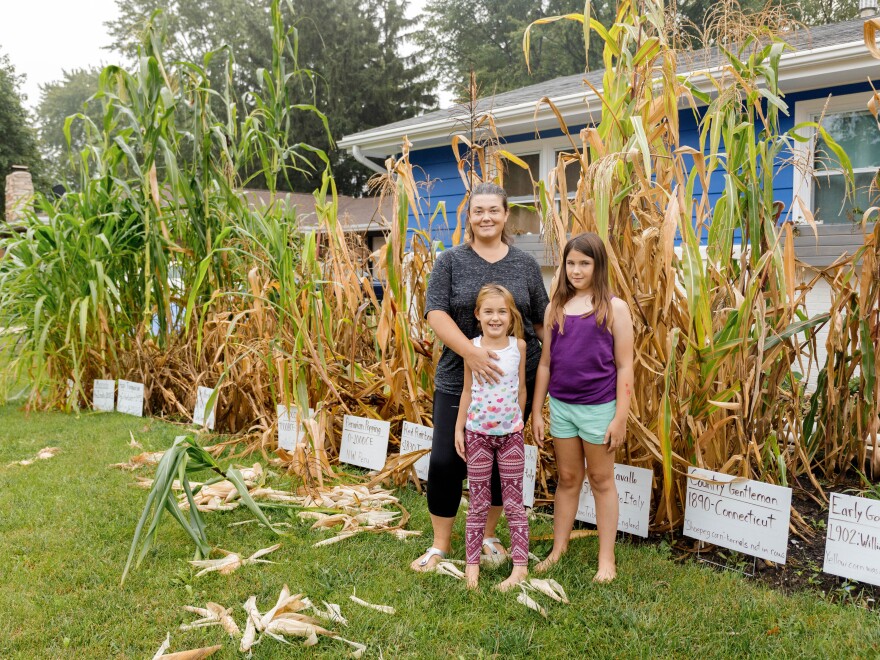Passers-by are getting quite a view outside a home on Vernon Avenue in Normal: Instead of flower beds chilling in the front yard, there are 15-foot stalks of corn.
Longtime gardener Erin Ripley-Gataric of Normal grew up out in the cornfields. This summer, for her family's home garden, they got their hands on some compost with a lot of nitrogen in it. That kind of soil can burn up the roots of many plants. But corn is the exception.

So they planted corn. In their front yard.
“If we're going to plant some corn, let's plant a bunch of different kinds of corn. If we're going to plant a bunch of different kinds of corn, let's plant them in the order in which humanity developed them,” said Ripley-Gataric. “We ordered some internationally to have to dig back through there and find out that most of these varieties date back to before written history or definitely before European written history. Like most of these are pre-Colonial, pre-Columbian. One of them was actually labeled pre-Incan.”
Ripley-Gataric explained that planting corn became an academic tool for her children, who are homeschooled. Fifteen varieties of corn were grown in their garden; some were local and others were shipped to them internationally from Central America and Mexico.
“I never expected to save money or feed my family at all, because if I had then I would have like treated the plants and cared about the Japanese beetles and done stuff like that. But we knew we weren't going anywhere for vacations. This is our 5th year homeschooling too, so it was just considered an educational expense. This was an educational project, not so much of a dinner plate kind of project,” said Ripley-Gataric.
Her children learned about world history and a timeline of how Europeans versus the western hemisphere worked with corn. Kernels were planted, and the children took stats of the plants.
“The stuff that I ordered internationally came from … a street address in Mexico or Guatemala, and it had somebody's name on it as the return address, so it was from an individual. Especially the teosinte—the plant that is like the native ancestor of corn, what they cultivated out to eventually become corn. That came in a tiny little ziplock baggie,” she said.
They learned corn kernels can come in different colors. Japanese beetles were a common pest while growing corn, and they got a look at those too.

They ended up with only four edible ears of corn, but Ripley-Gataric’s family put it use. On a summer day the family made a sweet corn, melon and shrimp salad.
The biggest tip the Ripley-Gataric family has for people at home wanting to grow corn is to plant it in their front yard. Planting corn in the front yard keeps squirrels and critters away because they will avoid spaces where there is a flow of people.
Next season the Ripley-Gataric family will be planting a pollinator mix that brings butterfly traffic.
“It’s going to be very disappointing to everyone because I've had requests to do the same thing with beans—grow a timeline with beans. ‘Please grow a timeline of rice. Please grow timeline of wheat,’ but it is going to be flower bulbs.”
WGLT depends on financial support from users to bring you stories and interviews like this one. As someone who values experienced, knowledgeable, and award-winning journalists covering meaningful stories in central Illinois, please consider making a contribution.



